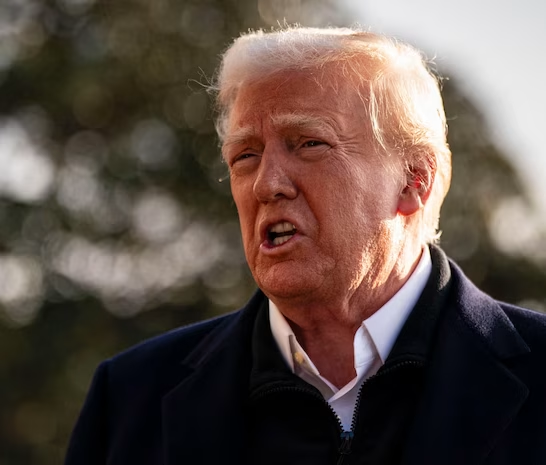Donald Trump has long been vocal about his interest in acquiring Greenland, a move that has sparked discussions across political and economic circles. While many dismissed his proposal as unrealistic, the former U.S. president’s persistence in pursuing the world’s largest island suggests deeper strategic motivations. This is not the first time the United States has considered acquiring Greenland, but Trump’s renewed push has reignited debates about the island’s geopolitical significance and natural resources.

Trump first made headlines with his proposal in 2019 during his presidency. Reports indicated that he repeatedly discussed the idea with his advisors and even directed his team to explore the legal and logistical aspects of such a purchase. His suggestion was met with widespread skepticism and even humor, particularly from Danish officials, who control Greenland as an autonomous territory. The Danish Prime Minister dismissed the idea as “absurd,” prompting Trump to cancel a planned state visit to Denmark in response. Despite the backlash, Trump’s interest in Greenland has persisted, and he has continued to express a desire to bring the territory under U.S. control.
The idea of the United States acquiring Greenland is not entirely new. Historically, the U.S. has shown interest in the island due to its strategic location and economic potential. In 1946, President Harry Truman even offered Denmark $100 million in gold for Greenland, recognizing its importance during the Cold War. The U.S. already has a military presence on the island, with Thule Air Base serving as a key strategic outpost for missile defense and early warning systems. Given the growing geopolitical competition in the Arctic, Trump’s renewed interest in Greenland is rooted in both military strategy and economic opportunities.
Greenland holds immense geopolitical value due to its location in the Arctic region. As global warming melts ice caps, new shipping routes are opening up, making the Arctic an emerging focal point for global trade. Owning Greenland would allow the U.S. to strengthen its position in the Arctic and counter the growing influence of countries like Russia and China. Both nations have been expanding their activities in the region, with Russia reopening military bases and China investing in Arctic infrastructure. Trump’s push for acquiring Greenland aligns with America’s broader strategy of maintaining dominance in this increasingly important area.
Beyond its strategic location, Greenland is rich in natural resources, including rare earth minerals, oil, and gas. These resources are crucial for modern technology, from smartphones to renewable energy systems. The U.S. currently relies heavily on China for rare earth elements, and securing access to Greenland’s resources could help reduce this dependency. Additionally, as the ice continues to melt, more of Greenland’s land is becoming accessible for exploration and resource extraction, making it an attractive investment for future economic growth.
Trump’s son, Donald Trump Jr., recently visited Greenland, further fueling speculation about the family’s intentions. In a social media post, Trump Jr. expressed his admiration for the island and its potential benefits for the U.S., though he later clarified that he was not personally involved in any purchase discussions. His visit coincided with his father’s renewed calls for acquiring Greenland, suggesting that the idea remains a topic of serious consideration within Trump’s circle.
Despite Trump’s enthusiasm, Greenland’s leadership has firmly rejected the idea of selling the island. Greenland’s Prime Minister issued a statement affirming that the island is not for sale and will never be, emphasizing the importance of maintaining autonomy and sovereignty. European leaders have also warned that any attempt to claim Greenland by force would be met with strong resistance, highlighting the geopolitical tensions surrounding the issue.
Trump’s push to acquire Greenland reflects a broader pattern of expansionist thinking, as he has also spoken about reclaiming the Panama Canal and even considering Canada as the “51st state.” While these ideas may seem far-fetched, they underscore his belief in strengthening America’s global influence through territorial expansion. His approach, however, has faced significant resistance both domestically and internationally, raising questions about the feasibility of such ambitions.
Ultimately, Trump’s interest in Greenland is driven by a mix of strategic, economic, and historical factors. Whether or not such a deal will ever be possible remains highly unlikely, given Denmark’s and Greenland’s firm stance against it. However, the discussion surrounding Greenland highlights the growing importance of the Arctic in global geopolitics and the increasing competition for control over its valuable resources and emerging trade routes. As climate change reshapes the region, Greenland will continue to be a focal point in international affairs, regardless of whether Trump’s vision ever becomes a reality.


